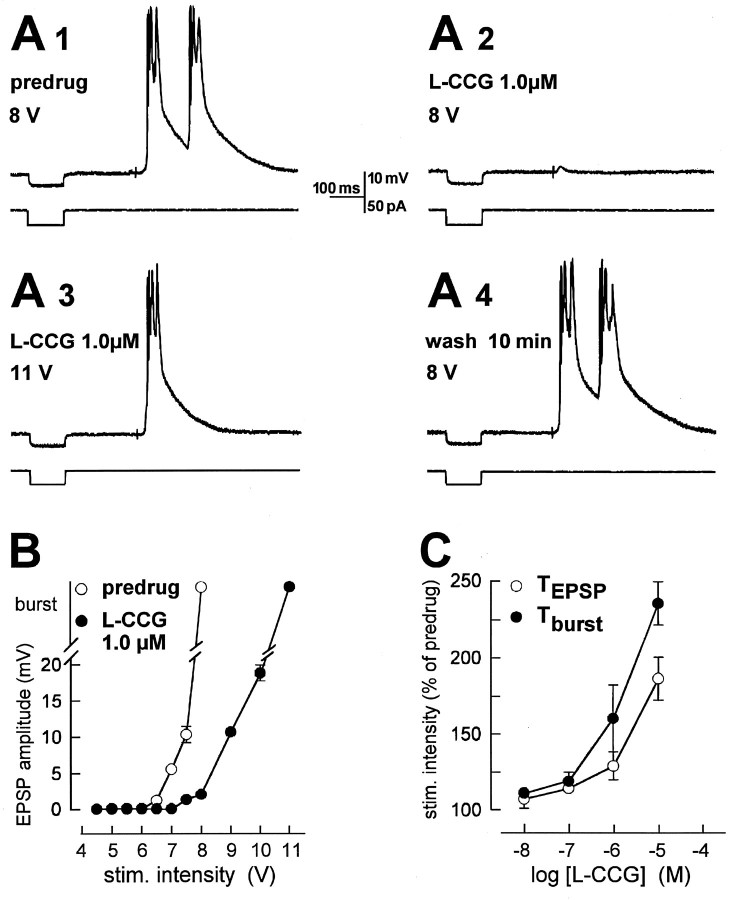Fig. 6.
l-CCG blocks evoked bursting and depresses evoked EPSPs without changes in input resistance.A, Current-clamp recordings (at −60 mV) from a kindled BLA neuron. Electrical stimulation (8 V; 150 μsec) in the LA evoked bursting before (predrug, A1) superfusion of l-CCG. After 10 min in l-CCG, evoked bursting was blocked; only a small EPSP could be elicited (A2). Increasing stimulus intensity overcame the block (A3). Bursting was evoked again with the lower stimulus intensity after 10 min of washout (A4).l-CCG did not change the input resistance measured as the electrotonic potential recorded in response to a hyperpolarizing current pulse (50 pA, 100 μsec; bottom traces inA1–A4). B, Input–output relationships of the same neuron show that l-CCG blocks bursting and depresses EPSPs. C, l-CCG increased the burst threshold (Tburst) more potently than the threshold for EPSPs (TEPSP) (two-way ANOVA,p < 0.05; n = 5). Threshold was defined as the stimulus intensity required to evoke the respective response in at least 5 out of 10 trials. The thresholds obtained with each dose of l-CCG were averaged and expressed as percentage of predrug control values (100%).

